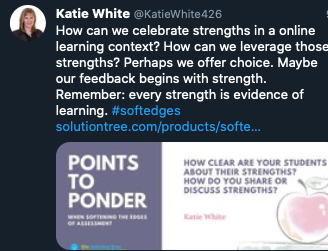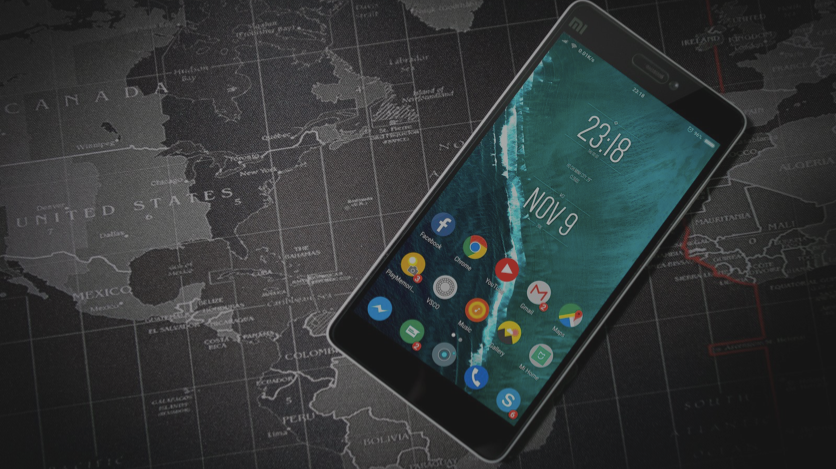There is No Map ... YET!
The destination is not clear, but we must set off. Let us do so with utmost care for those with whom we travel. Help them find their strengths & use it to explore & learn. Every day is a PD day. #myPDtoday

We all like to know where we are going. Even creativity requires some boundaries within in which to flourish. Orson Welles is credited with saying
"The enemy of art is the absence of limitations".
As teachers and schools set off on this journey it is important to remember that at this time, our goals are on the horizon. We are entering uncharted territory. Even successful online schools are not prepared for the magnitude of this change nor the intense resources that are needed to work with students from K - 12 in online learning situations.
What Is The Destination
When working with pre-service teachers around planning and assessment, I stress the need to have a destination for what is being done. Usually, this means that whatever is being done can be linked to the learning outcome(s). Right now, what is the destination for learning? For my boys, the destination is to adjust to being at home, away from their friends and not being able to visit, play, talk, etc. They are missing the social interactions. So at this time, what is the most important thing for students? Is it really necessary to rush to put the classroom online? Will this meet the goals we have for students? Have we really articulated those goals? Is it for them to sit in front of a laptop quietly while they listen to teachers do different things? What is the priority we have for students and their families? Teachers are some of the most creative people around but they need time to adjust to new circumstances where the destination is not what it was 3 weeks ago. Let’s take some time to figure out exactly what our destination will be before we start making all sorts of demands on students and their families. We have to remember, many families are struggling under the enormous stress and weight of what is happening. Let’s ensure any destination accounts for the enormity of what is happening in peoples’ lives.
Start with Strengths
A friend of mine, Katie White, reminded me that it’s important to start with strengths especially during a time when things are shifting and changing so quickly.

We are in a space where what was and what will be is happening. We are unsure of what might happen but know that we need to continue on. As Katie suggests "offering choice for students and giving feedback that focuses on strengths may be where we need to start". Students’ self-efficacy develops through the belief that they can succeed because they have been able to succeed in similar situations and student self-efficacy is an important part of their success. The same goes for teachers. Teachers are able to persevere and work through difficulties when they believe they can succeed no matter the obstacles because they have succeeded before and persevered to be successful. Given the enormity of the changes happening, building into this change process chances for a high probability of success is important. Rushing and pushing are counter to this happening. Remember, we are in a place where there is no manual or map. Focusing on strengths builds people's confidence that they will be able to persevere and be successful.
Take Your Time
Each day there seems to be another bank of online resources for teachers, new websites, new tips and suggestions, new videos, new podcasts and new materials of all sorts as people rush to get their products and ideas out. But, if I’ve learned anything during times of stress and change, less is more. There is no real timeline for this which is probably the most stressful thing. We don’t know how long this will last. How do you plan for no end date? How do you figure out what is a priority? It’s hard. Probably the best advice I’ve seen is don’t try to do too much the first few weeks. Help the students and parents get adjusted. Do students who are worried and anxious about what is happening really need a full day of school activities? Most of them haven’t seen their friends in a long time. They are worried about their friends, family who isn’t with them and grandparents and other relatives. Teachers need to take time to help them to make adjustments. How much time? That will depend on the child and the circumstances. The boundaries and structures of yesterday have been removed which is a very disorienting feeling. Taking the time and moving slowly provides time for everyone to make adjustments to what is happening.
Vygotsky is credited with explaining The Zone of Proximal Development. It is in this zone between what a student knows and what is being introduced that they do not fully understand that growth occurs. Often, it requires the support of a more knowledgable mentor, teacher, to support them through the struggle of making connections between what they know and new knowledge. At this time, there are many teachers, students, and parents all struggling to make connections, to find meaning, to relearn or learn new different skills and knowledge in order to make this change. Some are doing this with minimal supports. Some, with no supports at all.
There is no map. It has been said that necessity leads to innovation and invention. This doesn’t happen overnight. We will continue to draw this map as new landscapes come into view. And just like the early cartographers, it will take us exploring this together in order to get a better picture of what we are seeing.
There is no map… YET!


comments powered by Disqus